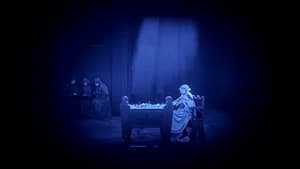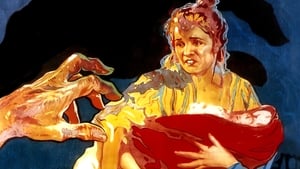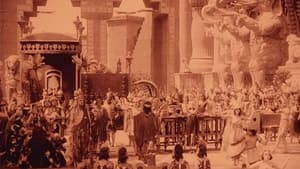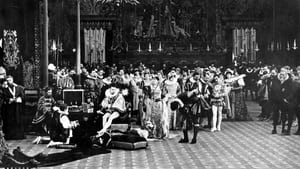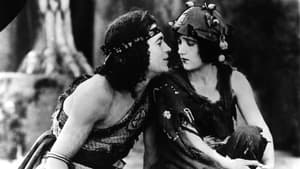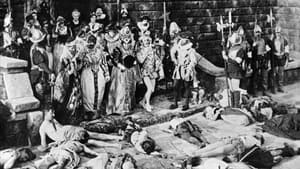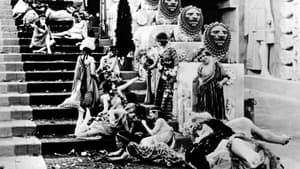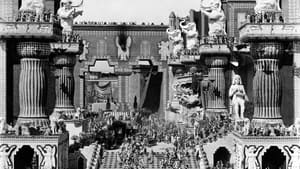Video Sources 0 Views
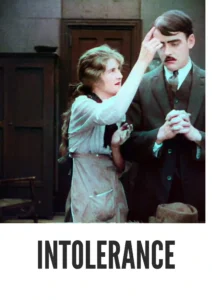
Synopsis
Intolerance (1916) Colorized: A Classic Reimagined in HD
Step back in time and witness D.W. Griffith’s epic silent film, Intolerance: Love’s Struggle Throughout the Ages, as never before. This meticulously colorized version brings a fresh visual dimension to a cinematic landmark, allowing both seasoned classic film enthusiasts and new viewers to appreciate its grandeur in stunning high definition. Often considered one of the most influential films of the silent era, Intolerance makes for a valuable addition to any digital collection .

Movie Storyline
Intolerance weaves together four distinct narratives, each set in a different historical period, to explore the destructive nature of intolerance throughout human history . These stories include:
- The Fall of Babylon (539 BC): Depicts the conflict between Prince Belshazzar and Cyrus the Great, highlighting the role of religious intolerance in the city’s downfall .
- The Judean Story (c. AD 27): Recounts the crucifixion of Jesus, illustrating religious intolerance during the time of Christ .
- The French Story (1572): Centers on the St. Bartholomew’s Day Massacre, showcasing the religious persecution of the Huguenots .
- The Modern Story (1914): Focuses on crime, moral puritanism, and labor conflicts in America, portraying how these forces impact marginalized individuals .
These storylines intertwine, connected by the recurring image of a mother rocking a cradle, symbolizing the enduring nature of humanity and the cyclical recurrence of intolerance2.
Movie Cast
Intolerance features a stellar cast of silent film actors, including:
- Lillian Gish as Woman Who Rocks the Cradle5
- Mae Marsh as The Dear One
- Robert Harron as The Boy
- Constance Talmadge as The Mountain Girl5
- Alfred Paget as Prince Belshazzar5
Movie Genre
Intolerance is a Drama/History/Silent film31.
Historical Context
Released in 1916, Intolerance was D.W. Griffith’s response to the controversy surrounding his previous film, The Birth of a Nation, which was criticized for its racist depictions . Griffith aimed to create a film that addressed the broader theme of intolerance and its devastating consequences throughout history . The film’s innovative narrative structure, massive sets, and epic scale made it a landmark in cinematic history .
Colorization Details
This colorized version of Intolerance has been carefully crafted to enhance the viewing experience while preserving the integrity of the original film. The colorization process involved meticulous attention to detail, ensuring that the colors are historically plausible and visually appealing . This restoration breathes new life into Griffith’s masterpiece, making it accessible to modern audiences accustomed to color films.
Technical Specifications
Experience Intolerance in stunning high definition. The restoration boasts enhanced brightness, resolution, and color, offering a viewing experience far superior to that of unrestored versions .
- Original Aspect Ratio: 1.33:129
- Film Length: Approximately 177 minutes
Cast and Crew
- Directed by: D.W. Griffith
- Produced by: D.W. Griffith5
- Written by: D.W. Griffith5
- Cinematography: Billy Bitzer14
- Studio: Wark Producing Corporation5
Technical Details
- Download Format: MP4
- Resolution: HD (1080p)
- Compatibility: Compatible with all modern devices (smartphones, tablets, computers, smart TVs)
Download Intolerance (1916) Colorized Today!Rediscover a cinematic treasure with this beautifully colorized version of Intolerance. A must-have for classic film aficionados and anyone interested in the history of cinema. Add this enhanced version to your digital library today!
Citations:
https://c-istudios.com/optimizing-video-titles-and-descriptions-for-improved-seo/
https://en.wikipedia.org/wiki/Intolerance_(film)
https://obscurehollywood.net/intolerance-1916.html
https://anchordigital.com.au/articles/2025-seo-trends-to-keep-an-eye-out-for
https://www.britannica.com/topic/Intolerance-film-by-Griffith
https://themoviescreenscene.wordpress.com/2023/01/22/intolerance-1916/
https://setupad.com/blog/seo-tips-increase-organic-traffic/
https://storykit.io/blog/video-seo
https://www.dreamhost.com/blog/seo-strategy/
https://www.adaminsights.com/8-outdated-seo-strategies-to-forget-by-the-end-of-2024-and-what-you-should-adopt-in-2025/
https://www.adworthmedia.org/blog/the-most-common-mistakes-in-seo-to-avoid-in-2025/
https://www.theadfirm.net/the-complete-guide-to-optimized-content-for-seo-in-2025/
https://fr.wikipedia.org/wiki/Intol%C3%A9rance_(film,_1916)
https://archive.org/details/INTOLERANCE_201407
https://www.imdb.com/title/tt0006864/
https://patentlyjewish.com/movie-review-1916-intolerance/
https://the-avocado.org/2018/03/13/film-club-week-3-intolerance-1916/
https://eurekavideo.co.uk/movie/intolerance/
https://www.youtube.com/watch?v=Y_V6ZsthCxQ
https://en.wikipedia.org/wiki/Film
https://esvs.org/wp-content/uploads/2024/02/ESVS-2024-AAA-Guidelines.pdf
https://www.granthaalayahpublication.org/Arts-Journal/ShodhKosh/article/download/1329/1062/10223
https://mechanical-engineering.gsfc.nasa.gov/files/GSFC-X-673-64-1F.pdf
https://www.imdb.com/title/tt0006864/plotsummary/
https://christinawehner.wordpress.com/2016/05/02/intolerance-1916/
https://publicdomainreview.org/collection/intolerance-1916/
https://www.filmsite.org/into.html
https://www.silentera.com/video/intoleranceHV.html
https://www.imdb.com/title/tt0006864/technical/
https://core.ac.uk/download/pdf/20325642.pdf
https://archive.org/details/Intolerance
https://en.wikipedia.org/wiki/Intolerance_(film)
https://themoviescreenscene.wordpress.com/2023/01/22/intolerance-1916/
https://www.youtube.com/watch?v=vIIP0JC-gdc
